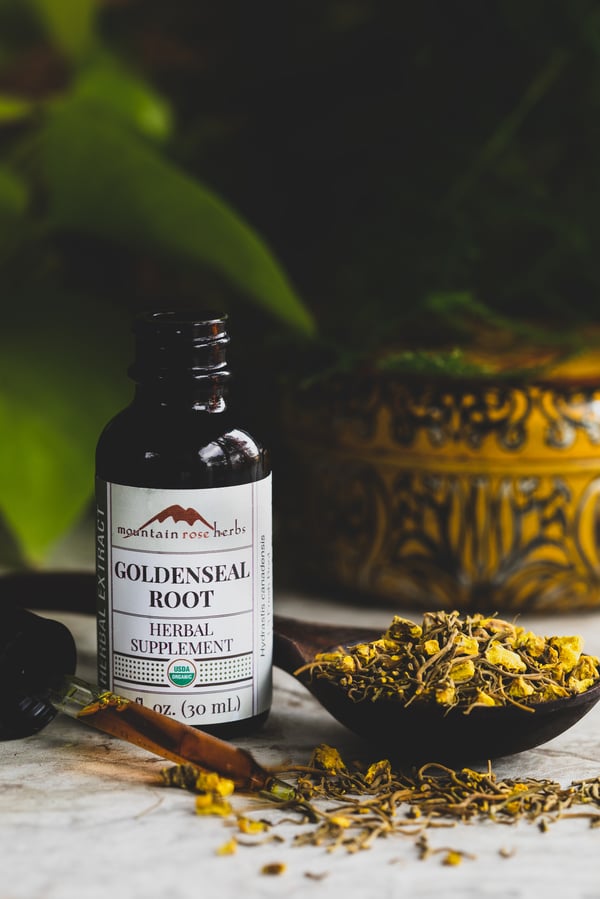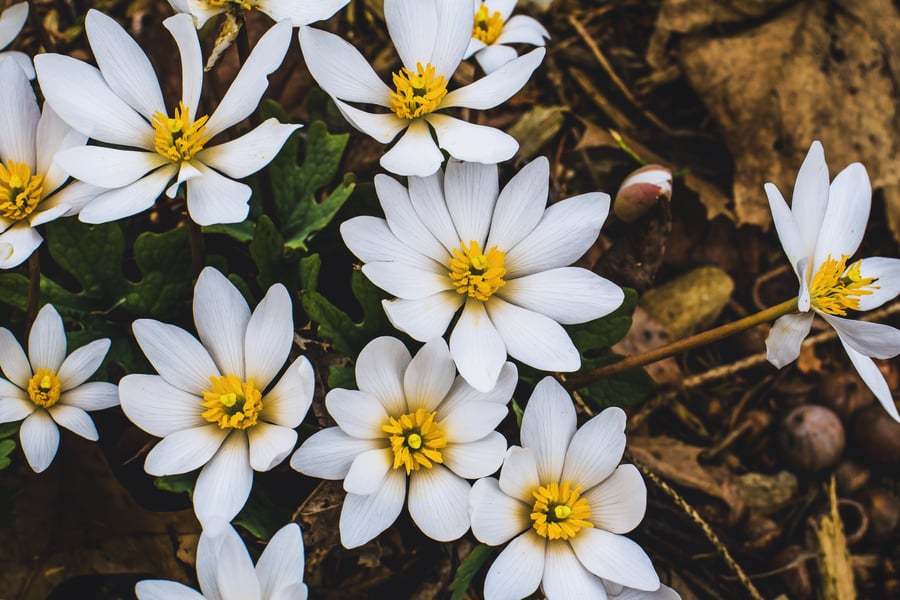Readers of the Mountain Rose Herbs blog know that one of our primary concerns is the ongoing and increasing impact of overharvesting on wild plants. Some of the most popular medicinal herbs in the world—for example, goldenseal, bloodroot, black cohosh, trillium, and osha—are at risk and/or endangered. As well as rampant wildharvesting, these precious botanicals are impacted by land use issues and climate change, which are becoming more problematic. As a bulk herbs company dedicated to putting people, plants, and planet before profit, we believe it is our responsibility to do everything possible to find solutions for our herbal allies. One way we do that is to work within the regulations set forth by CITES—the Convention on International Trade in Endangered Species of Wild Fauna and Flora.
CITES is a multilateral treaty between governments that strives to ensure that international trade in wild plants and animals does not threaten the survival of a species. It is one of the largest and oldest conservation agreements in the world. In 1963, at a meeting of the IUCN (The International Union for Conservation of Nature), members adopted a resolution from which CITES was drafted. In 1973, 80 member nations met in Washington, D.C. to agree on the final text of the agreement, which went into effect in 1975. Membership currently includes 184 “parties” (183 countries and the European Union) that have voluntarily agreed to be bound by the convention.
CITES gives parties a framework that they can use to create conservation legislation through a system of permits and certificates. The legislation pertains to live plants and animals as well as the products that come from them. For example, regarding plants, CITES parties include food products like herbs and spices, timber, medicines, and a variety of other botanical goods that are bought and sold around the world.
The CITES Appendices are where we find the lists of species that require protection. There are currently more than 37,000 species listed in the appendices. Appendix I includes species that are the most endangered and potentially threatened with extinction. Appendix II includes species that are at risk if international trade continues at the current pace. Being listed in Appendix II does not stop the trade of the species, but starts the process of regulatory action and gathering more information to determine how to best support the wild population. And Appendix III includes species that are protected in at least one country that has asked other CITES parties for help in controlling trade.
How CITES Works
A good botanical example of how CITES parties work together to protect a species is goldenseal (Hydrastis canadensis L). Historically, goldenseal, which is native to the forests of North America, had a broad range in the eastern to midwestern United States and Canadian provinces. Today only scattered remnant populations remain. It is one of the most at-risk medicinal herbs, but continues to be one of the best-selling herbs internationally. In 1994-1995, when over six million goldenseal roots were shipped overseas, it became clear that goldenseal needed protection.
1n 1997 goldenseal was listed in Appendix II of CITES in the United States and Canada. This listing puts goldenseal into the permits and certificates system that governs exports and imports. Anyone wanting to export goldenseal from North America or re-export it from anywhere else in the world must apply for a permit, which may or may not be granted depending on how the goldenseal is acquired and whether or not it will harm the survival of the species.
A CITES listing such as this is a first step; it provides a framework on which nations can work together to restore a species to its native habitat and give it a sustainable future. In the case of goldenseal, the CITES designation gives the U.S. Forest Service, state government agencies, and conservation groups a means to partner with similar groups in Canada to work toward protection and restoration.
How Mountain Rose Herbs Works With CITES
We work closely with CITES to determine how we source herbs and spices. The appendices guide us in determining if a plant can be sustainably harvested and, if so, when and where. Sometimes we have to discontinue a product because we cannot find a cultivated option and cannot ethically support wildharvesting of that botanical. CITES guidelines and regulations give us a clear path forward and enable us to do our part in protecting at-risk and endangered species.
Because we are deeply invested in the botanical world and wholly committed to ethical procurement, we often have insights about problematic issues before a plant winds up in a CITES appendix. For instance, in November 2022, Rhodiola rosea was added to the CITES Appendix II. This traditionally wildharvested adaptogen is endangered in much of its historical European range and is now primarily wild-sourced from the Altai Mountains region in Siberia and China. Because of our forward-facing vision in the organic herb industry, we saw this coming and positioned ourselves to take the pressure off of wild populations of Rhodiola rosea earlier. Mountain Rose Herbs has supported North American rhodiola cultivation since 2016, and we have sourced only cultivated organic rhodiola ever since.
CITES has been at the forefront of conservation and wild species protection for half a century. It provides us with invaluable guidance and offers the world opportunities to come together to protect the wild flora and fauna that share our planet.
Want to learn more about how Mountain Rose Herbs Puts People, Plants, and Planet Before Profit?
Read About Ethical Issues in the Herb Industry: Wildharvesting vs. Cultivation
You may also enjoy:
- Goldenseal: Planting a Future for One of Our Most At-Risk Herbs
- A Forest-Grown Future of American Ginseng
- Mountain Rose Herbs is Furthering Its Commitment to Sustainability in 2023














